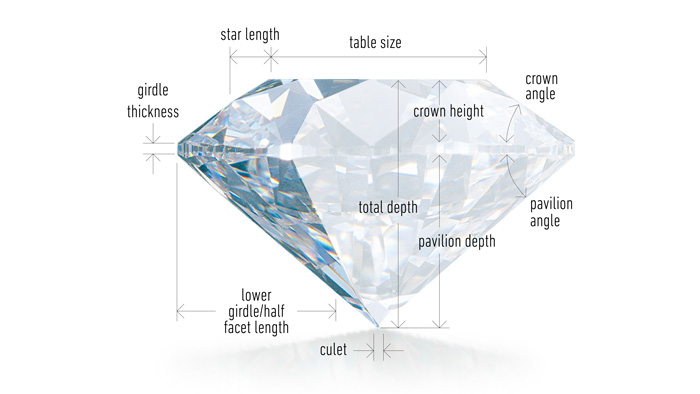Diamonds have been the symbol of luxury and Pride since the earliest civilizations. Even now, They are known as the most popular item to purchase for a lady on special occasions.
So Why buy a diamond?
The answer is simple. Diamonds are seen as the most beautiful and magical gift of love. That is probably why many kings have fought over them. Another reason is that no other gemstone is more difficult to mine. For this reason, it is said that the larger the diamond is, the rarer it can be.
What makes a diamond unique?
Well, its natural beauty beyond imitation of course. It is known that no two diamonds can ever be the same. They can be similar when seen with the naked eye but with a hand lens, that similarity can be spotted easily. Each diamond is unique and is endowed with the character and personality of its own.
This leads to another question: What are the characteristics that determine the quality of diamonds??
The Characteristics that determine the quality are known as the 4C's in the gemstone world. The 4C's are Cut, Color, Clarity, and Carat weight.
CUT
The way a diamond is cut and polished is very important. It is the precision and delicacy of the cut that dictates the maximum amount of light the diamond will refract and reflect. The better the cut, the greater will be its brilliance, sparkle, and fire. When a diamond is cut to good proportions, light is internally reflected from one facet to another and then dispersed through the crown.
So a well-cut diamond is comprised of facets with the correct angle, which are perfectly placed to maximize the diamond's brilliance. It is the quality of the cut and its final polish that unlocks the hidden beauty
COLOR
Most diamonds look colorless, but there are many shade differences, and the closer a diamond is to having no color the more valuable it becomes. The reason color varies in diamonds is due to the place where diamonds are formed are having extreme temperature and pressure conditions so traces of elements like nitrogen and boron could have been incorporated into the diamond's atomic structure.
It is these traces of elements that gives diamonds their color or lack of it. Diamonds with no hint of color at all are very rare. but also rare are diamonds with strong colors. These types of diamonds are called 'Fancies'. Most gem-quality diamonds appear as colorless but usually have a hint of color.
CLARITY
Thanks to nature, every diamond is unique. Each diamond contains small traces of other minerals trapped during the crystallization process. These natural characteristics are called 'inclusions' which are better described as nature's fingerprints and help determine the age of diamond. The number, color, nature, size, and position of any inclusions determine the clarity of the diamond.
The fewer the inclusions, the rarer it will be graded, and the more light it will reflect, making it more valuable. Since it is very rare to find a diamond that has no inclusions, the closer to flawless it is the greater the value.
CARAT WEIGHT
A diamond's weight is the simplest of its characteristics to measure and has been used to calculate one aspect of a diamond's value. A carat is a unit of weight that derives from the carob seed. The pods of the carob (Locust tree) contain tiny seeds which are remarkably consistent in weight. These seeds were used by the earliest gem traders to weight their diamonds.
It is normally easy to weigh an unmounted diamond but once it is in a setting, it is only possible to estimate its weight by special gauges.







